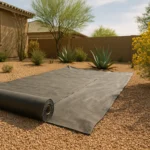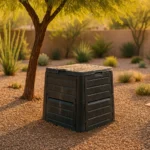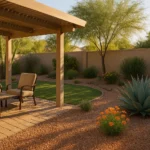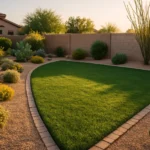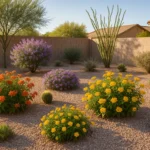As a Gilbert-based gardening enthusiast, you may have heard about the benefits of using landscape fabric in your yard. Beyond being a popular tool for managing weeds, it also plays a role in soil health and moisture retention. However, like any gardening technique, it’s not without its challenges. This guide will help you navigate the pros, cons, and practical tips for using landscape fabric in Gilbert’s unique environment.
Understanding Landscape Fabric
Landscape fabric, also known as weed cloth or weed barrier, is a permeable textile that gardeners lay over the soil and cover with mulch or stones. Its main function is to prevent weed growth by blocking sunlight, thus inhibiting photosynthesis. Yet, it still allows water and air to penetrate, keeping your soil healthy and hydrated.
In Gilbert, where the hot desert climate can be challenging for many types of plants, landscape fabric can be a game-changer. It helps maintain soil moisture – a precious commodity in our arid environment – and reduces the need for constant weeding. However, understanding how to use it effectively is key to reaping these benefits.
The Pros of Using Landscape Fabric
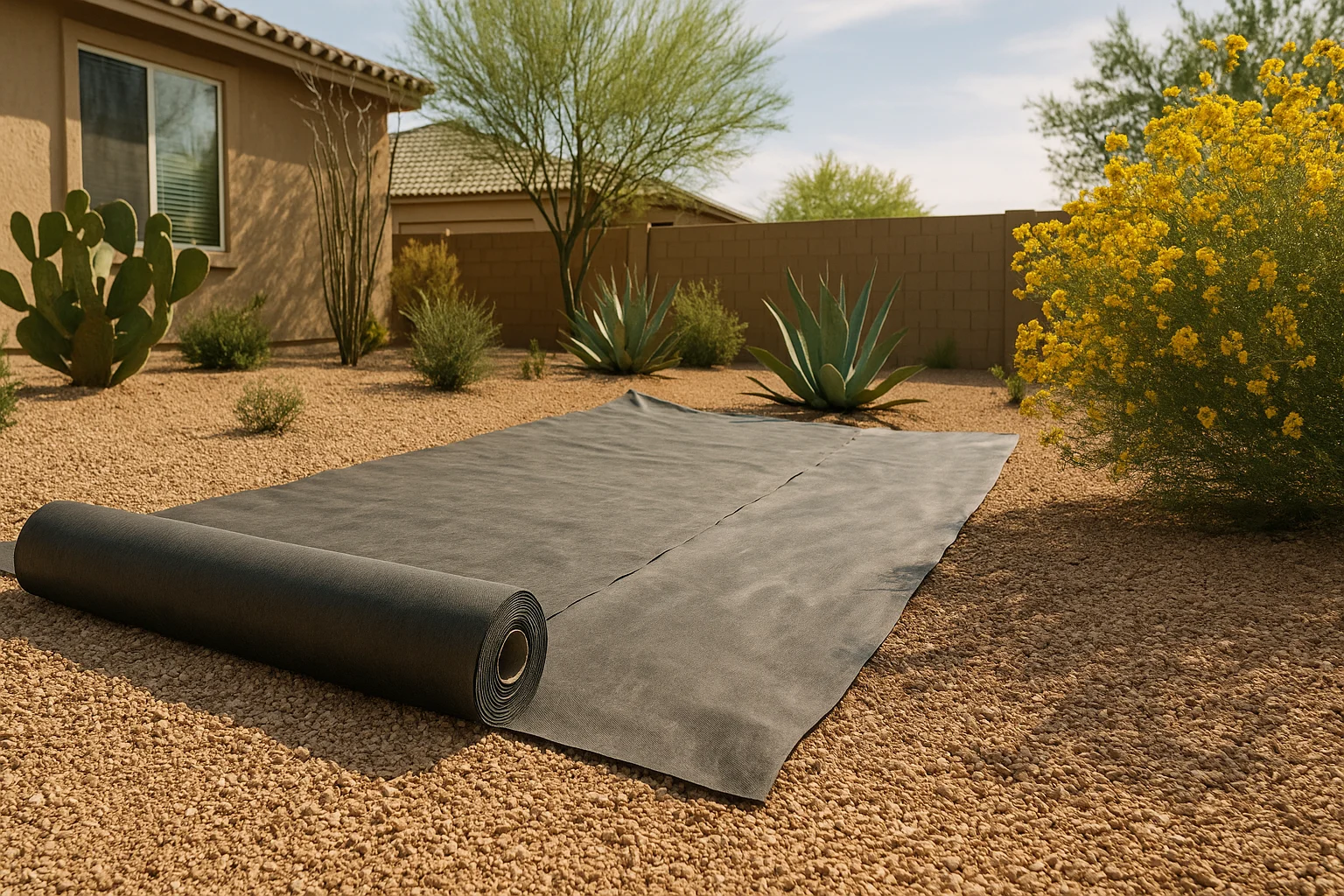
There are several reasons why many Gilbert gardeners swear by landscape fabric. For starters, it’s an excellent tool for weed control. Instead of spending hours pulling out stubborn weeds, you can lay down this barrier and significantly reduce their growth. This can be particularly beneficial in our local gardens, where certain invasive species like Bermuda grass can quickly take over if left unchecked.
Landscape fabric also helps retain soil moisture by reducing evaporation. In an area like Gilbert where water conservation is important, this is a significant benefit. Furthermore, it can help prevent soil erosion and keep your garden neat and tidy, especially in areas with decorative plants or pathways.
The Cons of Using Landscape Fabric
While landscape fabric offers numerous benefits, it’s not without its drawbacks. Some gardeners find that it can hinder the natural process of organic matter breaking down into the soil. This is a vital process for soil health, as it replenishes nutrients and supports beneficial soil organisms. Therefore, it’s crucial to consider this before deciding to cover large areas of your garden with the fabric.
Another issue is that over time, the fabric can degrade and become less effective. This can lead to weeds growing through the material, defeating its original purpose. It’s also worth noting that installing and maintaining landscape fabric requires some effort and commitment, so it may not be the best choice for every gardener or every garden.
Effective Strategies for Using Landscape Fabric in Gilbert
If you decide to use landscape fabric in your Gilbert garden, there are a few strategies to maximize its benefits. Firstly, remember to install it correctly. The fabric should be laid flat over the soil, with holes cut out for any existing plants. Cover it with a layer of mulch or stones to protect it from sunlight and reduce wear and tear.
It’s also essential to choose the right areas to use landscape fabric. It works best in decorative areas with perennial plants, pathways, and around trees or shrubs. In vegetable gardens or areas with annual plants, it’s less useful, as these areas require regular soil turning and amendment.
Finally, remember to maintain your landscape fabric regularly to ensure it continues to function effectively. This can involve checking for degradation, adding more mulch or stones as needed, and replacing it when necessary.
Embrace Eco-Conscious Practices
As an advocate for eco-conscious gardening, I always encourage practices that respect our local environment. Using landscape fabric can be part of this approach, especially when it’s used thoughtfully and responsibly. By controlling weeds and conserving water, it can contribute to a healthier, more sustainable garden in Gilbert.
If you’re interested in other strategies for eco-conscious gardening in our region, consider checking out articles on cultivating luxuriant gardens or unleashing your green thumb in Gilbert’s gardens. These resources offer more insights into making the most of our unique climate and resources.

